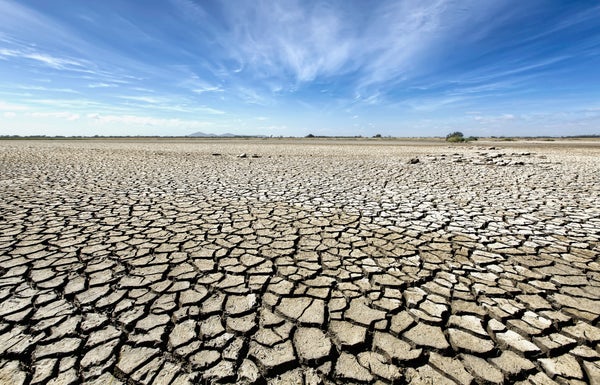Droughts, heat waves and other extreme climate-related events are growing concerns in a warming world. Studies have found climate change is already fueling an increase in some extreme events and that they’re likely to worsen as temperatures continue to climb.
Now, new research suggests the reverse may also be true—these events, themselves, could also worsen climate change.
Weather and climate events tend to affect the amount of moisture contained in the soil, according to the study published yesterday in the journal Nature. Unusually hot or dry periods, for instance, will temporarily lead to drier earth. And these fluctuations in soil moisture can have a huge impact on the amount of carbon the Earth is able to absorb, the study found.
On supporting science journalism
If you're enjoying this article, consider supporting our award-winning journalism by subscribing. By purchasing a subscription you are helping to ensure the future of impactful stories about the discoveries and ideas shaping our world today.
Using earth system models, the authors calculated land might actually absorb about twice as much carbon if it weren’t for the fluctuations caused by these unusual weather and climate events.
That’s a big deal for the climate. A substantial proportion of the greenhouse gas emissions humans put into the atmosphere—as much as 25 percent, by some estimates—get reabsorbed into the Earth’s soil and vegetation.
“The concern is if these events became more commonplace, and then ecosystems didn’t have the time to recover between events, that they could take a larger toll on overall carbon flux,” said Julia Green, lead study author and a doctoral student at Columbia University.
The researchers say plants—which naturally take in carbon dioxide from the atmosphere—are strongly affected by changes in soil. A severe dry period can stress the local vegetation, or even cause some plants to die off, leading to less productivity and less carbon storage.
Furthermore, research suggests plants can take a long time to bounce back after such an event. Even if a drought is followed immediately by a period of heavy rainfall, it may not be enough to offset the effects.
Scientists expect climate change to make these kinds of events worse in many places.
Additionally, climate change may cause some regions not just to experience an increase in individual extreme events but also to become drier overall on a year-round basis. That could have a strong effect on the type of vegetation land can support and how much carbon it can take in.
Uncertainty
For now, research shows that land worldwide is still taking up carbon at increasing rates—in other words, the carbon sink is still growing bigger, faster. But the new study suggests this could change within a matter of just decades if humans don’t soon cut down on greenhouse gas emissions.
Under a severe climate change scenario, in which emissions continue through the end of the century at their current rates, the land carbon sink may hit its peak within about 40 years, according to the study. After that, it could start taking in less carbon than before, leaving more in the atmosphere and causing global warming to accelerate.
And in that case, global climate goals like the 2 degree Celsius target could approach faster than previously estimated.
The research “shines a bright spotlight on just how important water is for the uptake of carbon by the biosphere,” said carbon-cycle expert Chris Schwalm of the Woods Hole Research Center in a statement on the new research.
The study reaffirms that changes in the Earth’s natural carbon sinks are hugely important for the global carbon cycle and the future impact of climate change. That said, it’s still one of the most challenging research areas for climate scientists. There’s a lot of uncertainty about what will happen to the land carbon sink in the future and how it might respond under different climate change scenarios.
For instance, some studies have shown that more carbon dioxide in the atmosphere may actually be a boon to carbon-guzzling plants, helping to increase their productivity. Other research warns the benefits of increased carbon dioxide may only be temporary, tapering off after a few decades.
Many scientists also point out that other consequences of climate change—including the kinds of droughts and heat waves the new study highlights—may offset these benefits in many places.
The new research could help scientists make better predictions about the land carbon sink in the future. For one thing, the findings could help improve the way models represent plants and their response to water stress.
“Models right now tend to not include a lot of processes that are related to soil moisture and plant water stress, and so really what we’re stressing in this paper is that this should be a priority,” Green said, “because soil moisture is obviously having huge impacts on the overall ability of the biosphere to store carbon.”
Reprinted from Climatewire with permission from E&E News. E&E provides daily coverage of essential energy and environmental news at www.eenews.net.
